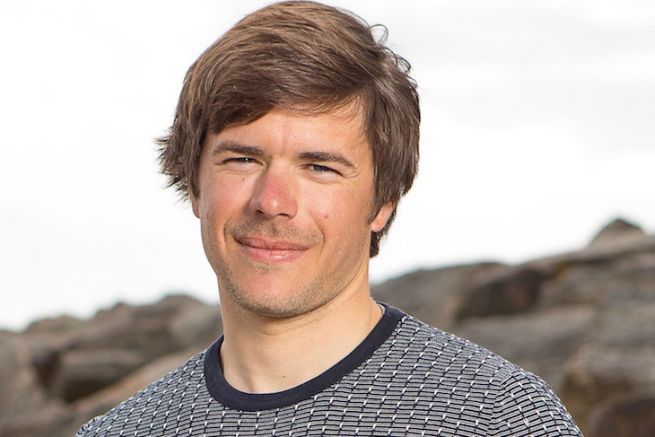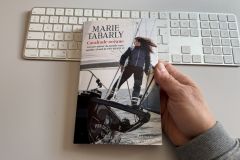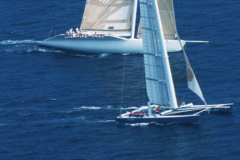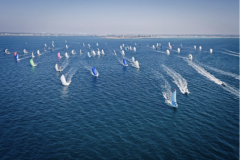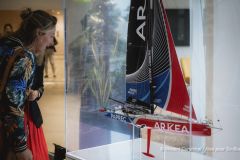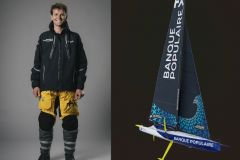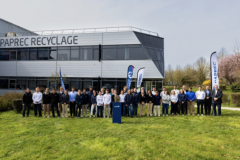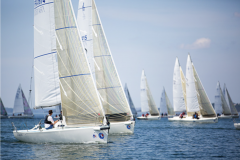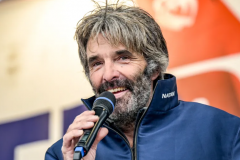How long have you been on the Figaro circuit? Moving up to the IMOCA is a logical continuation of your career? Is it an opportunity or a desire on your part?
I started in the Figaro in 2014, the same year I obtained my engineering degree. So I've been doing the Figaro for 4 years now and it's going pretty well. To motivate myself, I've always needed a goal, which helps me progress, even if it doesn't necessarily seem achievable. My goal was the Vendée Globe, a race that is particularly close to my heart, especially as I come from Les Sables-d'Olonne. It's a bit of a part of me.
I was present on the pontoons, for the race starts, to look at the boats, their differences. It's something that fascinates me, as much for the race as for the design of the boats and their developments.
It was time. I have a very good relationship with my partners and good results in the Figaro. I am in partnership with Filière de Crédit Mutuel de Bretagne, a subsidiary of Crédit Mutuel Arkéa, whose chairman is Pierre Denis. It is through him that I met Sébastien Petithuguenin, Managing Director of Paprec. They are very close, especially since Arkéa is a shareholder of the Paprec group.
That is how Arkéa and Paprec decided to embark jointly on the Vendée Globe adventure, especially as Paprec had been on the IMOCA circuit for four years with Jean-Pierre Dick.
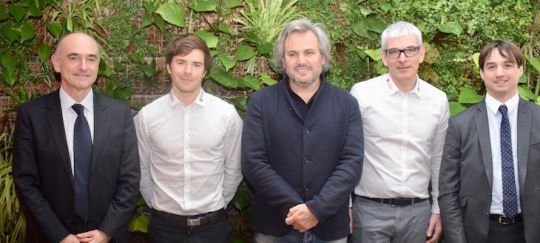
Have you ever sailed an IMOCA before? Is that something you're apprehensive about, especially with the harshness of these boats?
A little with Vincent Riou for his preparation for the 2016/2017 Vendée Globe. But that doesn't frighten me. Of course I hope to be able to stay in control of my boat, but it's a question of training.
The project started on time and I'm already integrated into Vincent's team, with Jean-Marc Failler, PRB project manager, who will be in charge of monitoring the construction of my boat. It's a side that reassures me a lot, I feel integrated into his team. As a result, when the boat is launched, it's going to be nothing but fun. In the meantime, I'm going to continue training on Vincent's boat, which will soon be fitted with foils.
Compared to the Figaro, the boat is bigger, with longer manoeuvres. But in the end I'm not apprehensive. What I can apprehend on the other hand, is the start with this heavy emotion, which you feel even as a visitor.
Vincent Riou will be your technical director, how was your partnership born?
I've known Vincent for a while, we get along well. We've even sailed together on the Tour de Bretagne ( NDRL: September 2017 ). Its premises, in Port-la-Forêt, are in front of the pontoon where my boat is.
I went to meet him before going to see my partners because I wanted to be surrounded by a team that could hold its own. There's a lot at stake, financially and technologically. It's important to be surrounded by someone with experience and the project was born with that in mind. We had a good feeling and he had this wish to pass on to me what he had learnt over all these years in IMOCA. He's also someone who is still 100 per cent in the game.
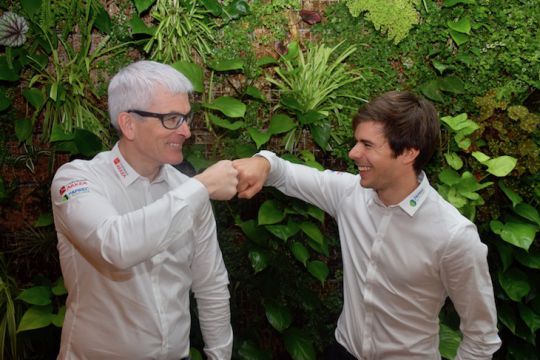
Can you tell us a little bit more about your boat?
Design has already begun. We have design appointments every week. Construction will begin in September 2018 and it will be launched in the spring of 2019. Between now and then, that won't stop me from training with Vincent on his boat (PRB) for the next Route du Rhum (NDRL: in which Vincent Riou will be taking part).
It will be a hydrofoil boat. Now it's not all defined yet. We are in the process of running a whole architectural loop to define the width and general shape of the boat. We don't know the final shape yet.
However, it promises to be a boat 100% adapted to foils, and not a hybrid boat where it is possible to go backwards by opting for daggerboards.
How was the choice of architect made?
Vincent Riou has made an appointment with the 3 main architects of the circuit : VPLP, Verdier and Juan Yachts Design. We met them all and Vincent insisted that I take things in hand.
Juan is the first one we met, at the Nautic boat show in Paris. From the first meeting, there was a feeling and I had already almost chosen him. He had a strong personal motivation and he had the heart to give himself 100% in this project. He also has some really nice evaluation tools and as an engineer, I'm passionate about that.
I also relied on the opinion of Vincent, with whom we had defined a grid of criteria. Jean-Marc Failler had also favoured this architect. In the end, the three of us agreed and it was a natural decision.
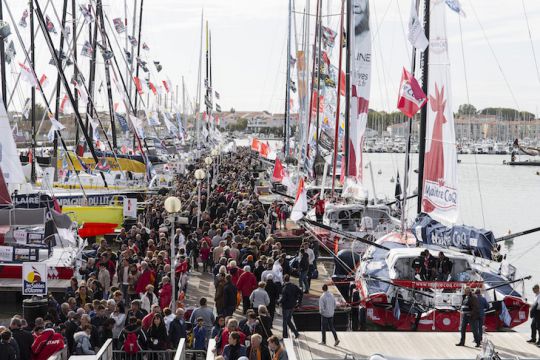
If we could draw a parallel, what's the difference between the two circuits?
I think that the Figaro circuit sportily there's nothing better, because we're running on equal terms. We can consider that everyone has the same boat. In the IMOCA class, the boat has a lot to do with it, even if the sailor counts, as you have to be able to control the engine.
The Figaro is a sprint, whereas the Vendée Globe is about endurance. In the Vendée Globe there is a sporting project, but also adventure. In both cases, we keep this notion of sportsmanship. To sum up, I think that the Figaro circuit is very formative for going on the IMOCA circuit.
So the Figaro circuit is over?
I'm on the Figaro circuit until the end of 2018. But I'm not turning the page. I'm already going to see how 2018 goes. I'm keen to put in some good performances and my partners are counting on me too.
From 2019, I'm going to concentrate on the IMOCA, as it's a difficult boat, but I'm not saying I won't be going back to the Figaro, especially with the Figaro Bénéteau 3 coming up. It allows you to question yourself, to push your limits. But I'll be doing a sort of parallel project, a bit like Yann Eliès or Jeremie Beyou. In any case, that will be after the 2020 Vendée Globe.
